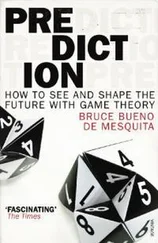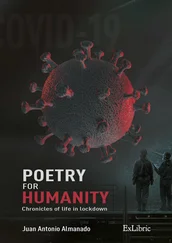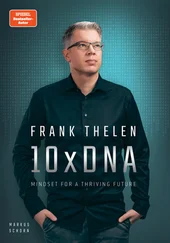The Prolongation of Life.
The Recovery of Youth, or at least some of the Marks of it, as new Teeth, new Hair colour’d as in youth
The art of flying
The Art of Continuing long under water, and exercising functions freely there
Great Strength and Agility of Body exemplify’d by that of Frantick Epileptick and Hystericall persons
The Acceleration of the Production of things out of Seed
The making of Parabolicall and Hyperbolicall Glasses
The practicable and certain way of finding Longitudes
Potent Druggs to alter or Exalt Imagination, Waking, Memory, and other functions, and appease pain, procure innocent sleep, harmless dreams, etc
A perpetuall Light
The Transmutation of Species in Mineralls, Animals, and Vegetables
The Attaining Gigantick Dimensions
Freedom from Necessity of much Sleeping exemplify’d by the Operations of Tea and what happens in Mad-Men and stimulants to keep you awake. [2]
Anyone from Boyle’s seventeenth century would be astonished by the modern world—far more than a Roman would have been by Boyle’s world. Moreover, many changes are still accelerating. Novel technologies—bio, cyber, and AI—will be transformative in ways that are hard to predict even a decade ahead. These technologies may offer new solutions to the crises that threaten our crowded world; on the other hand, they may create vulnerabilities that give us a bumpier ride through the century. Further progress will depend on findings that come fresh from research laboratories, so the speed of advance is especially unpredictable—a contrast with, for instance, nuclear power, which is based on twentieth-century physics, and with the nineteenth-century transformations wrought by steam and electricity.
A ‘headline’ trend in biotech has been the plummeting cost of sequencing the genome. The ‘first draft of the human genome’ was ‘big science’—an international project with a three-billion-dollar budget. Its completion was announced at a press conference at the White House in June 2000. But the cost has by 2018 fallen below one thousand dollars. Soon it will be routine for all of us to have our genome sequenced—raising the question of whether we really want to know if we carry the genes that give us a propensity to particular diseases. [3]
But now there’s a parallel development—the faster and cheaper ability to synthesise genomes. Already in 2004, the polio virus was synthesised—a portent of things to come. In 2018, the technique is now far advanced. Indeed, Craig Venter, the American biotechnologist and businessman, is developing a gene synthesiser that is, in effect, a 3D printer for genetic codes. Even if it is only able to reproduce short genomes, this could have varied applications. The ‘code’ for a vaccine could be electronically transmitted around the world—allowing instant global distribution of a vaccine created to counter a new epidemic.
People are typically uneasy about innovations that seem ‘against nature’ and that pose risks. Vaccination and heart transplants, for instance, aroused controversy in the past. More recently, concern has focused on embryo research, mitochondrial transplants, and stem cells. I followed closely the debate in the United Kingdom that led to legislation allowing experiments on embryos up to fourteen days old. This debate was well handled; it was characterised by constructive engagement between the researchers, the parliamentarians, and the wider public. There was opposition from the Catholic Church, some of whose representatives circulated pamphlets depicting a fourteen-day-old embryo as a structured ‘homunculus’. Scientists rightly emphasised how misleading this was; such an early-stage embryo is actually a microscopic and still undifferentiated group of cells. But the more sophisticated opponents would respond, ‘I know that, but it’s still sacred’—and to that belief science can offer no counterargument.
In contrast, the debate on genetically modified (GM) crops and animals was handled less well in the United Kingdom. Even before the public was fully engaged there was a standoff between Monsanto, a giant agrochemical corporation, and environmentalists. Monsanto was accused of exploiting farmers in the developing world by requiring them to purchase seeds annually. The wider public was influenced by a newspaper campaign against ‘Frankenstein Foods’. There was a ‘yuck’ factor when we learned that scientists could ‘create’ rabbits that glow in the dark—an aggravated version of the distaste many of us feel at the exploitation of circus animals. Despite the fact that GM crops have been consumed by three hundred million Americans for an entire decade without manifest damage, they are still severely restricted within the European Union. And, as mentioned in section 1.3, providing GM foodstuffs to undernourished children to combat dietary deficiencies has been impeded by anti-GM campaigners. But there are genuine concerns that reduced genetic diversity in crucial crops (wheat, maize, and such) might render the world’s food supply more vulnerable to plant diseases.
The new gene-editing technology, CRISPR/Cas9, could modify gene sequences in a more acceptable manner than earlier techniques. CRISPR/Cas9 makes small changes in the sequences of DNA to suppress (or alter the expression of) damaging genes. But it doesn’t ‘cross the species barrier’. In humans, this most benign and uncontroversial use of gene editing removes single genes that cause specific disease.
In vitro fertilisation (IVF) already provides a less invasive way than CRISPR/Cas9 to weed out damaging genes. In this procedure, after hormone treatment to induce ovulation, several eggs are harvested, fertilised in vitro, and allowed to develop to an early stage. A cell from each embryo is then tested for the presence of the undesirable gene, and one that is free of it is then implanted for a normal pregnancy.
A different technique is now available that can replace a particular category of faulty genes. Some of the genetic material in a cell is found in organelles called mitochondria; these are separate from the cell’s nucleus. If a faulty gene is mitochondrial, it is possible to replace it with mitochondria from another female—leading to ‘three-parent babies’. This technique was legalised by the United Kingdom’s parliament in 2015. The next step would be to use gene editing on DNA in the cell nucleus.
In the public’s mind, a sharp distinction exists between artificial medical interventions that remove something harmful and deploying similar techniques to offer ‘enhancement’. Most characteristics (size, intelligence, and such) are determined by an aggregate of many genes. Only when the DNA of millions of people is available will it become possible (using pattern-recognition systems aided by AI) to identify the relevant combination of genes. In the short term, this knowledge could be used to inform embryo selection for IVF. But modification or redesign of the genome is a more remote (and of course more risky and dubious) prospect. Not until this can be done—and until DNA with the required prescription can be artificially sequenced—will ‘designer babies’ become conceivable (in both senses of that word!). Interestingly, it is unclear how much parental desire there would be for offspring ‘enhanced’ in this fashion (as opposed to the more feasible single-gene editing needed to remove propensities towards specific diseases or disabilities). In the 1980s, the Repository for Germinal Choice was established in California with the aim of enabling the conception of ‘designer babies’; it was a sperm bank, dubbed the Nobel prize sperm bank, with only ‘elite’ donors, including William Shockley, co-inventor of the transistor and a Nobel prize winner, who achieved notoriety later in life for being a proponent of eugenics. He was surprised—though most of us were probably gratified—that there was no great demand.
Читать дальше
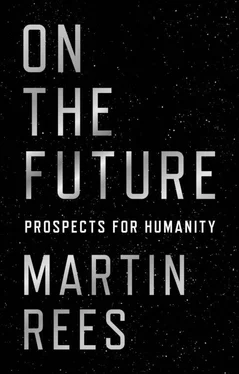
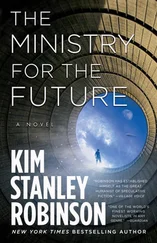
![Мартин Рис - Всего шесть чисел. Главные силы, формирующие Вселенную [litres]](/books/414169/martin-ris-vsego-shest-chisel-glavnye-sily-formir-thumb.webp)
